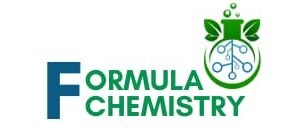CAS number 58-56-0
INCI name pyridoxine HCl
Vitamin B6, or pyridoxine, is a water-soluble vitamin vital for numerous physiological processes. It plays a key role in amino acid metabolism, neurotransmitter production, red blood cell formation, and immune system support. This vitamin exists in multiple forms, including pyridoxal and pyridoxamine, along with their phosphorylated derivatives, with pyridoxal 5’-phosphate (PLP) being its active form in the body.
Purpose
Vitamin B6 functions as an antistatic agent, reducing frizz and flyaways in hair. It also acts as a hair conditioner, strengthening and moisturizing hair by supporting protein metabolism. Additionally, it serves as a skin conditioner, enhancing hydration, regulating sebum, and improving skin texture.
Origin
Vitamin B6 is naturally derived from plant and animal sources, including poultry, fish, bananas, and whole grains. It can also be synthetically produced for use in supplements and cosmetic formulations.

| Feature | Description |
| Name | Vitamin B6 |
| Type | Water-soluble vitamin |
| Source | Found in poultry, fish, bananas, potatoes, fortified cereals, and supplements |
| PH | 2.4–3.5 |
| Color | White or slightly off-white |
| Odor | Odorless or slightly characteristic odor |
| Physical state | Crystalline or powdered solid |
| Concentration | Vary depending on product |
| Solubility | Freely soluble in water |
| Boiling point | 567.6°C at 760 mmHg |
Multiple Bioactive Forms
Vitamin B6 exists in several interconvertible forms, including pyridoxine, pyridoxal, and pyridoxamine, along with their phosphorylated derivatives. Among these, pyridoxal 5’-phosphate (PLP) is the most biologically active and serves as a coenzyme in over 100 enzymatic reactions, making it essential for various metabolic processes.
Crucial Role in Amino Acid and Protein Metabolism
Vitamin B6 is involved in the metabolism of amino acids, proteins, and neurotransmitters. It aids in transamination, deamination, and decarboxylation processes, which are vital for the synthesis of proteins, including keratin, the structural component of hair and skin. This makes it a key ingredient in hair-strengthening and skin-rejuvenating formulations.
Water-Soluble and Rapidly Absorbed
Being a water-soluble vitamin, Vitamin B6 is quickly absorbed in the small intestine but is not stored in significant amounts within the body. Excess amounts are excreted through urine, necessitating a regular dietary intake or supplementation to maintain optimal levels. This characteristic also means that it has a low risk of toxicity when consumed in recommended doses.
Sebum-Regulating and Anti-Inflammatory Properties
Vitamin B6 plays a vital role in regulating sebum (oil) production in the skin and scalp, making it beneficial for individuals with oily, acne-prone skin and dandruff-prone scalps. Its anti-inflammatory effects help reduce redness, irritation, and inflammatory skin conditions such as eczema and dermatitis.
Antistatic and Hair Conditioning Agent
In hair care products, Vitamin B6 functions as an antistatic agent, preventing the build-up of static electricity, which leads to frizz, flyaways, and dryness. It also acts as a conditioning agent, improving hair texture, moisture retention, and resilience, making it softer and shinier.
Supports Collagen Synthesis and Skin Barrier Function
Vitamin B6 is involved in the production of collagen, which is essential for maintaining skin elasticity, firmness, and hydration. It strengthens the skin’s natural barrier, protecting it from environmental stressors, pollutants, and moisture loss, making it a valuable addition to anti-aging and hydrating skincare formulations.
Neurotransmitter Synthesis and Mood Regulation
Unlike most vitamins, Vitamin B6 directly impacts mental health and cognitive function by playing a role in the synthesis of key neurotransmitters such as serotonin, dopamine, and gamma-aminobutyric acid (GABA). These neurotransmitters regulate mood, stress, sleep, and cognitive function, making Vitamin B6 essential for both neurological health and emotional well-being.
Antioxidant and Free Radical Scavenger
Vitamin B6 exhibits antioxidant properties, protecting cells from oxidative stress and free radical damage. This function is particularly beneficial in anti-aging skincare products, as it helps reduce wrinkles, fine lines, and UV-induced damage.
Improves Blood Circulation for Skin and Hair Health
It contributes to healthy blood circulation, ensuring an adequate supply of oxygen and nutrients to skin and hair follicles. This stimulates hair growth and promotes a healthy complexion, reducing dullness and dryness.
Applications of Vitamin B6 (Pyridoxine)
Skincare Products – Used in moisturizers, serums, and anti-aging creams to enhance skin hydration, regulate sebum production, reduce inflammation, and improve overall skin texture.
Hair Care Products – Found in shampoos, conditioners, and hair masks to strengthen hair, reduce frizz and static, and promote healthier scalp conditions by balancing oil production.
Cosmetic Formulations – Added to foundations, primers, and BB creams for its skin-conditioning benefits, helping to maintain moisture balance and prevent dryness.
Pharmaceutical and Nutraceutical Supplements – Used in dietary supplements and fortified foods to support metabolism, cognitive function, immune health, and hormonal balance.
Anti-Dandruff and Scalp Treatments – Incorporated in scalp tonics and medicated shampoos to soothe irritation, regulate oil levels, and reduce dandruff.
Acne Treatment Products – Present in acne gels, spot treatments, and facial cleansers for its ability to control excess oil, reduce breakouts, and calm inflamed skin.
Wound Healing and Repair Creams – Utilized in topical treatments and skin repair creams to aid in cell regeneration and healing of minor wounds, cuts, and skin irritation.
Sports Nutrition and Energy Supplements – Found in pre-workout and energy-boosting supplements, as it plays a role in protein metabolism and muscle recovery.

